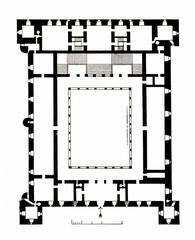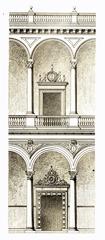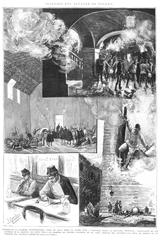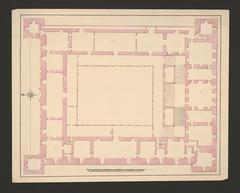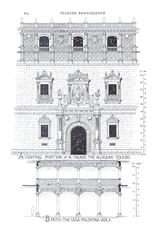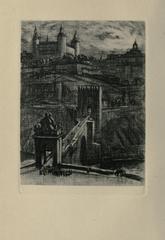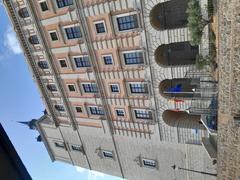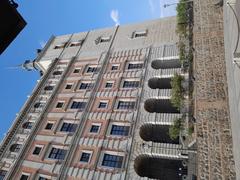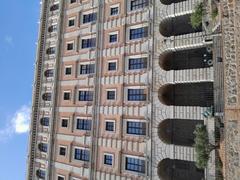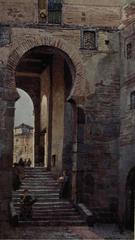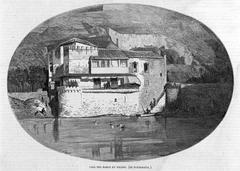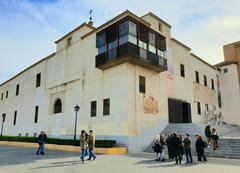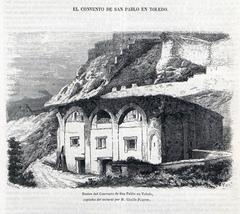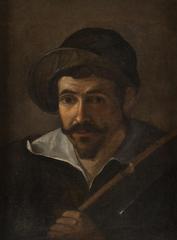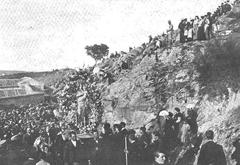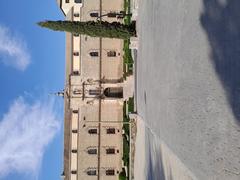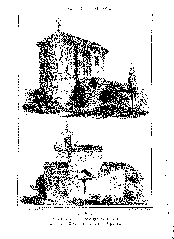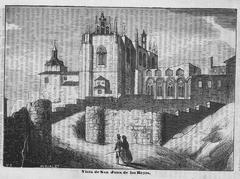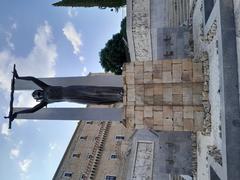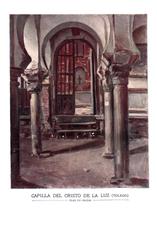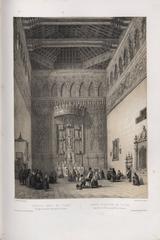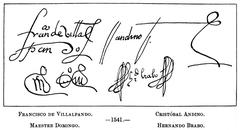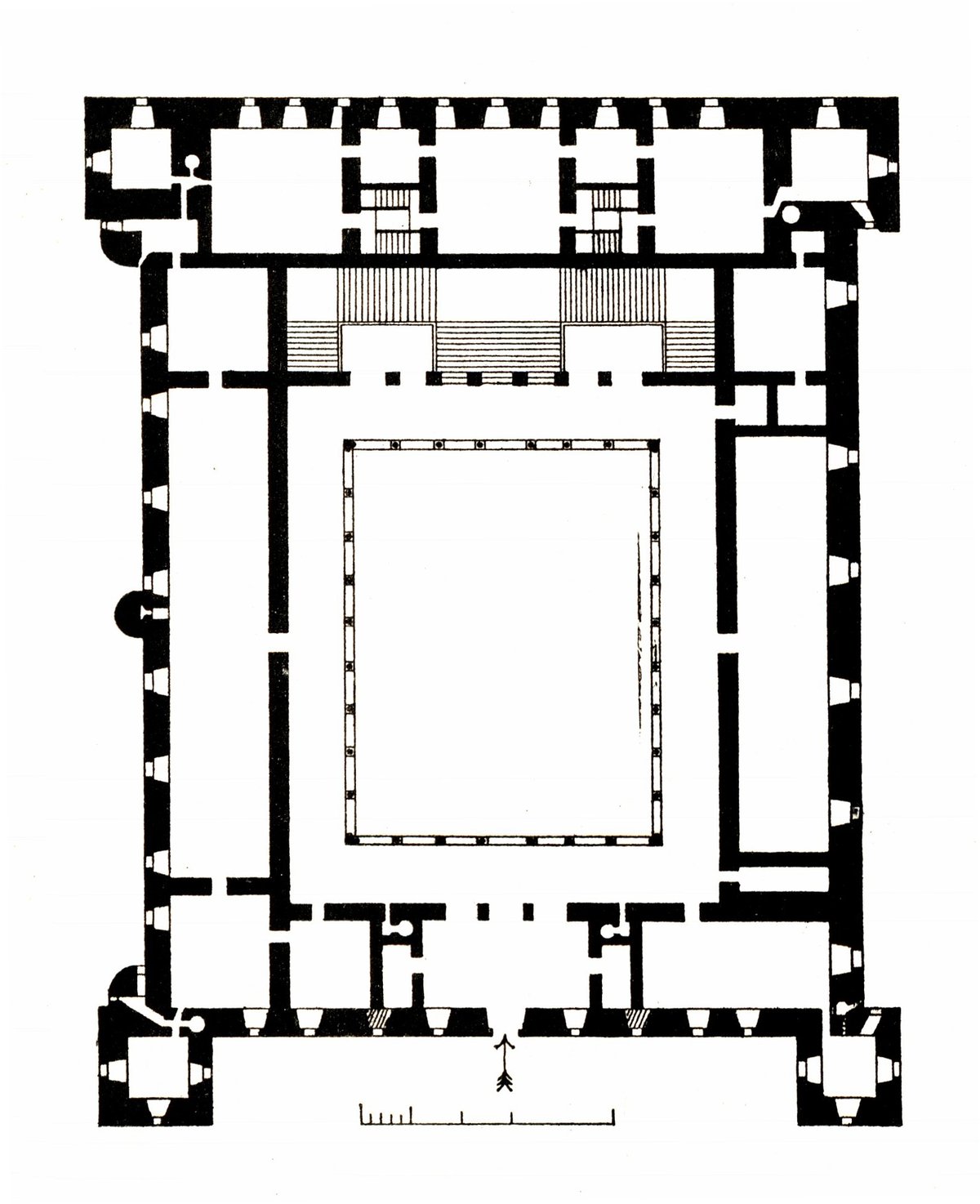
Comprehensive Guide to Visiting Alcázar de Toledo, Toledo, Spain
Date: 17/07/2024
Introduction
Perched majestically atop a hill in the historic city of Toledo, Spain, the Alcázar de Toledo stands as a monumental testament to the region’s rich and multifaceted history. Originally constructed as a Roman palace in the 3rd century, this iconic fortress has witnessed a series of transformations that reflect the diverse cultural and political shifts throughout Spanish history. The term ‘Alcázar’ itself is derived from the Arabic word ‘al-qasr,’ meaning ‘fortress’ or ‘palace,’ underscoring its enduring strategic and residential significance (source).
From serving as a royal residence during the Visigothic period to becoming a fortified stronghold under Moorish rule, the Alcázar has played a pivotal role in various eras of Spanish history. Its significance was further cemented during the Reconquista when it was reclaimed by Christian forces and transformed into a Renaissance palace under the reign of Emperor Charles V. The Alcázar’s dramatic history also includes its role as a symbol of nationalist resistance during the Spanish Civil War, a period when it endured a grueling 70-day siege (source).
Today, the Alcázar de Toledo houses the Army Museum (Museo del Ejército), which offers a comprehensive overview of Spain’s military history. The fortress’s architectural evolution, from its Roman foundations to its Renaissance redesign by Alonso de Covarrubias, serves as a visual narrative of the cultural influences that have shaped it. For visitors, the Alcázar provides not only a historical journey but also panoramic views of Toledo, making it a must-visit destination for anyone interested in Spain’s heritage (source).
Table of Contents
- Introduction
- Early Beginnings
- Visigothic and Moorish Periods
- Reconquista and Christian Monarchs
- Spanish Civil War
- Post-War Restoration and Modern Use
- Architectural Evolution
- Cultural Significance
- Visitor Experience
- Nearby Attractions
- Special Events and Tours
- Photographic Spots
- Practical Information
- FAQ
- Conclusion
Visiting Alcázar de Toledo - History, Tickets, and Must-See Highlights
Early Beginnings
The Alcázar de Toledo, originally constructed as a Roman palace in the 3rd century, is a testament to Spain’s rich and tumultuous history. The term ‘Alcázar’ is derived from the Arabic word ‘al-qasr,’ meaning ‘fortress’ or ‘palace,’ reflecting the site’s strategic and residential significance throughout history.
Visigothic and Moorish Periods
During the Visigothic period, the Alcázar served as a royal residence. The Visigoths, who ruled the Iberian Peninsula from the 5th to the 8th centuries, utilized the fortress for its strategic location. Following the Visigothic era, the Moors took control of Toledo in 711 AD. Under Moorish rule, the Alcázar was further fortified and expanded, serving as a key military and administrative center.
Reconquista and Christian Monarchs
The Reconquista saw Toledo recaptured by King Alfonso VI of Castile in 1085. The Alcázar then became a royal residence for the Christian monarchs. Significant renovations and expansions were undertaken during the reign of Emperor Charles V in the 16th century. Charles V commissioned the renowned architect Alonso de Covarrubias to redesign the fortress, transforming it into a Renaissance palace. This period marked the Alcázar’s transition from a military stronghold to a symbol of royal power and architectural grandeur.
Spanish Civil War
One of the most dramatic episodes in the history of the Alcázar occurred during the Spanish Civil War (1936-1939). The fortress became a symbol of nationalist resistance when it was besieged by Republican forces in 1936. Colonel José Moscardó, the commander of the Alcázar, famously refused to surrender despite intense bombardment and a dire situation. The siege lasted for 70 days, and the Alcázar was heavily damaged. The event became a powerful propaganda tool for the Nationalist cause, and the Alcázar was later restored as a monument to Francoist Spain.
Post-War Restoration and Modern Use
After the Spanish Civil War, the Alcázar underwent extensive restoration. The reconstruction aimed to preserve its historical significance while adapting it for modern use. Today, the Alcázar houses the Army Museum (Museo del Ejército), which showcases Spain’s military history from ancient times to the present. The museum’s exhibits include weapons, uniforms, and artifacts that provide insight into the country’s military heritage.
Architectural Evolution
The architectural evolution of the Alcázar reflects the various cultural and historical influences that have shaped it over the centuries. The original Roman foundations were built upon by the Visigoths and Moors, each adding their own architectural styles. The Renaissance redesign by Alonso de Covarrubias introduced classical elements, such as symmetrical facades and ornate decorations. The post-Civil War restoration aimed to preserve these historical layers while ensuring the structure’s stability and functionality.
Cultural Significance
The Alcázar de Toledo is not only a historical monument but also a cultural symbol. It represents the resilience and continuity of Spanish history, having witnessed the rise and fall of empires, the clash of cultures, and the evolution of architectural styles. The fortress’s role in the Spanish Civil War has imbued it with a sense of national pride and historical memory. Visitors to the Alcázar can explore its rich history through the exhibits in the Army Museum and the preserved architectural features that tell the story of its past.
Visitor Experience
For tourists, visiting the Alcázar de Toledo offers a unique opportunity to delve into Spain’s multifaceted history. The Army Museum provides a comprehensive overview of the country’s military past, with exhibits that cater to both history enthusiasts and casual visitors. The fortress’s strategic location atop a hill offers panoramic views of Toledo, adding to the visitor experience. Guided tours are available, providing detailed insights into the Alcázar’s history and significance.
Nearby Attractions
While in Toledo, don’t miss nearby attractions such as the Toledo Cathedral and the Monastery of San Juan de los Reyes. These historical sites offer additional insights into the rich cultural tapestry of the region.
Special Events and Tours
The Alcázar hosts special events throughout the year, including reenactments and military parades. Guided tours are available, offering in-depth insights into its storied past.
Photographic Spots
Capture stunning photographs from the fortress’s vantage points, with panoramic views of Toledo providing a perfect backdrop.
Practical Information
The Alcázar de Toledo is open to the public year-round, with varying hours depending on the season. It is advisable to check the official Army Museum website for the latest information on opening hours and ticket prices. The fortress is accessible by foot from Toledo’s historic center, and there are also public transportation options available. Visitors are encouraged to wear comfortable footwear, as the site involves considerable walking and stair climbing.
FAQ
-
What are the visiting hours for Alcázar de Toledo? Visiting hours vary by season. It’s best to check the official Army Museum website for the most current information.
-
How much are tickets for Alcázar de Toledo? Ticket prices can also vary, so please refer to the official Army Museum website for up-to-date pricing.
Call to Action
For more insights and updates, download the mobile app Audiala, check out other related posts, or follow us on social media.
Conclusion
In summary, the Alcázar de Toledo stands as a testament to Spain’s rich and tumultuous history. Its transformation from a Roman palace to a modern museum encapsulates the cultural and historical evolution of the region. For visitors, it offers a profound and immersive experience, blending historical education with architectural beauty and scenic views.
